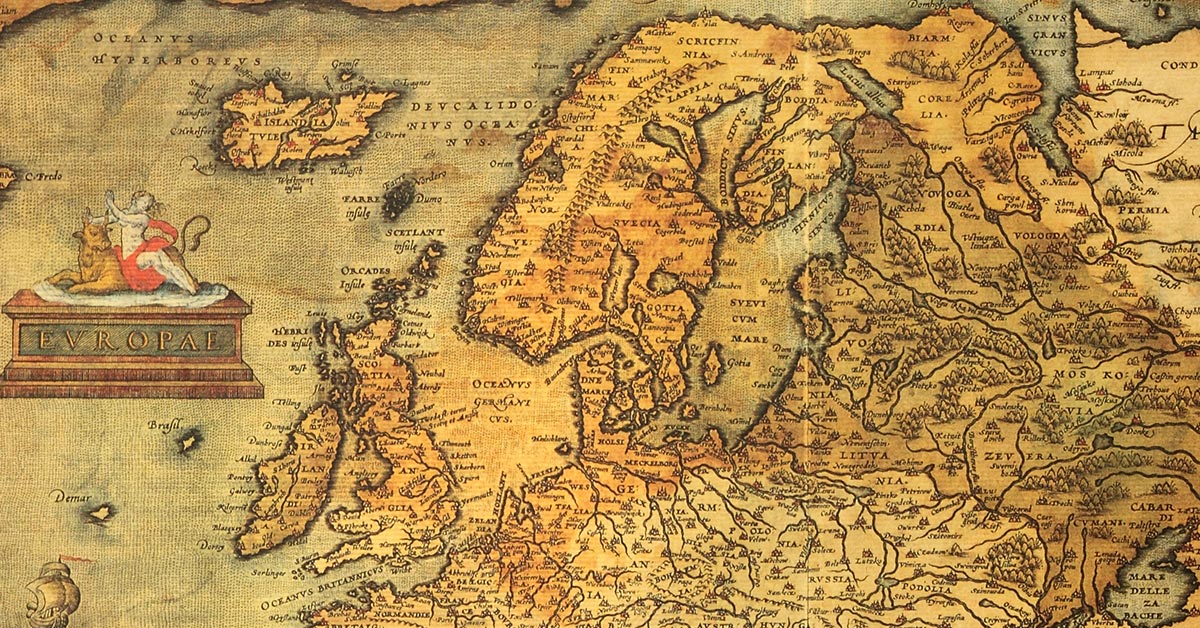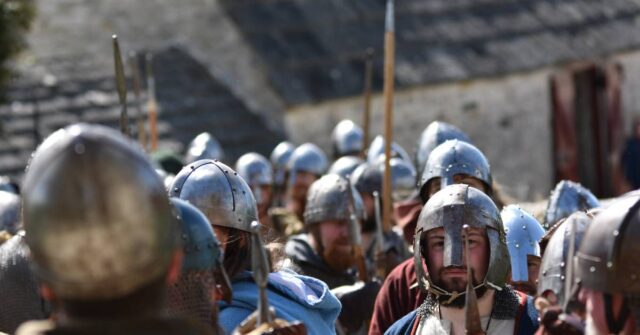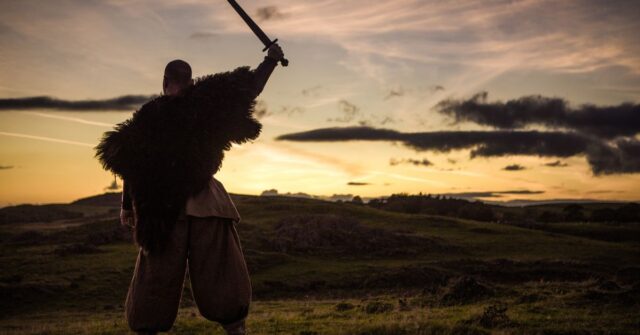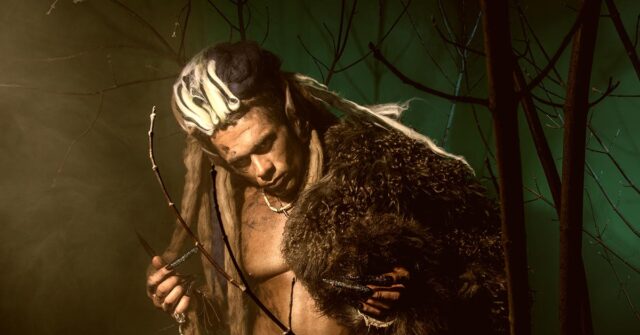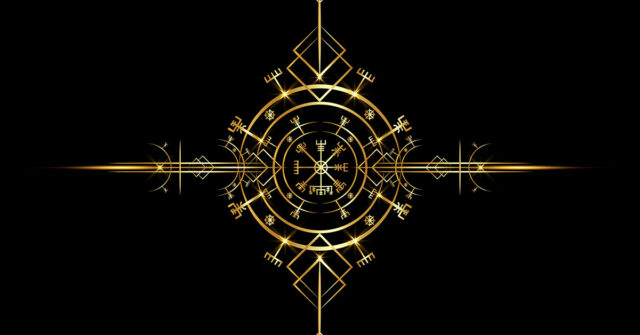Introduction to the Viking Age
Delve into the world of the Vikings, a captivating period in history characterized by seafaring exploration, conquest, and cultural exchange. In this section, we’ll explore the definition and time period of the Viking Age, the key regions and territories influenced by the Norse people, and the factors that led to the rise of this fascinating era.
Definition and Time Period
The Viking Age was a fascinating and tumultuous period in history, stretching from the late 8th century to the mid-11th century. During this time, Norse seafarers, warriors, and traders embarked on countless expeditions across Europe, Asia, and North America, leaving an indelible mark on the world.
Key Regions and Territories
The Viking Age primarily encompassed Scandinavia, comprising modern-day Denmark, Norway, and Sweden. However, the Vikings’ far-reaching expeditions extended their influence to other regions, including the British Isles, Greenland, Iceland, and even North America.
Factors Leading to the Viking Age
The onset of the Viking Age was spurred by a combination of factors, including population growth, technological advancements in shipbuilding, and a desire for wealth and land. These factors, coupled with a warrior culture and the belief in a glorious afterlife, fueled the Vikings’ ambitious pursuits.
Who Were The Vikings?
The first question we need to answer is who were the Vikings?
The term ‘Viking’ does not refer to a single ethnic group, but rather it was used to describe people from Scandinavia, who went on raiding and trading expeditions to seek wealth.
The Vikings originated from modern-day Norway, Sweden, and Denmark and they spoke the Old Norse language. In fact, the word ‘Viking’ actually comes from the Old Norse word ‘vikingar’ which means ‘pirates’ or ‘raiders’.
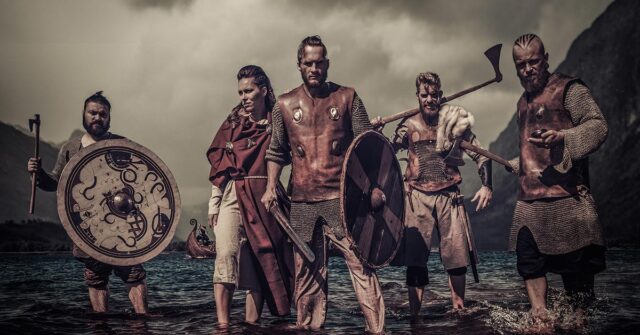
Essentially the Vikings are best known for their raids and conquests throughout Europe, which at times were so destructive that they left entire regions in disarray. These invasions also led to them being known for their courage and bravery in battle, as well as their fierce independence.
In addition to raiding and conquering, the Vikings also developed a rich culture and artistic tradition. They were also talented farmers, navigators, sailors, and blacksmiths.
Misconceptions About The Vikings
There are many misconceptions about the Vikings. One of the most common is that they were all barbarians. This is not true. While the Vikings did engage in battle and raid other lands, they also had a rich culture and tradition.
Another misconception about the Vikings is that they wore horned helmets. Unfortunately, there is no hard evidence to suggest this is true. They did however wear skull cap helmets to protect them in battle.
The Viking Age
The Viking age is the period of time when the Vikings were performing their invasions as part of their traveling expeditions.
This period lasted about 250 years during the Middle Ages. This era between the 8th to 11th centuries was when the Vikings were actively raiding and conquering parts of Europe.
The Viking Age is generally considered to be from 793-1066. During this time, the Vikings were a major force in Europe and their influence was felt from the British Isles to the Byzantine Empire.
When Did The Viking Age Begin?
The Viking Age is generally considered to have begun in 793 when Vikings raided the Lindisfarne monastery in England. This event marked the start of about two centuries of Viking expansion throughout Europe.
At first, these raids were relatively small and isolated. However, as time went on, they became larger and more organized. By the late 9th century, the Vikings had established permanent settlements in Europe, which they used as bases for their raids.
During their time, the Vikings raided and settled in many different parts of Europe, including Ireland, Scotland, Wales, France, Russia, and even Constantinople.
Viking History Timeline
It is mostly accepted that the Viking Age is from 793-1066 AD.
This era falls within the Middle Ages. Also known as Medieval Times, the Middle Ages lasted from around 476 AD to around 1450 AD.
This Medieval Era was the time period between the fall of the Western Roman Empire and the beginning of the Italian Renaissance period.
Below we will look at the timeline of events during the Viking Age:
- 700-750: It is most likely when small-scale Viking attacks started.
- 793 – 8th June: Widely accepted as the start of the Viking Age with an attack on Lindisfarne in Northumberland, England.
- 800-830: Vikings primarily targetted Ireland
- 855: Danish Vikings sack Paris
- 865-870: More Viking invasions of England
- 878: The Treaty of Wedmore
- 937: Battle of Brunanburh
- 1016: Danish Vikings conquer York, and establish the Danelaw in England
- 1066: Norwegian king Harald III is defeated by Saxon King Harold Godwinson at the Battle of Stamford Bridge
What Was Life Like For Vikings?
The Vikings were hardy people. They had to be, given the cold winters and rugged terrain of Scandinavia.
Life was often difficult, and death was commonplace. However, the Vikings also had a rich culture and tradition. They were skilled craftsmen and artists, and their tales of adventure and exploration have inspired many people over the centuries.
The Viking way of life revolved around their ships. These were their homes, their workplaces, and their means of transportation. These seafarers spent most of their time on the sea, sailing to different parts of Europe in search of new lands to settle.
When they weren’t sailing, the Vikings were busy farming, hunting, and gathering food. They also had to build their own houses and furniture. In fact, most Vikings were skilled in many different crafts.
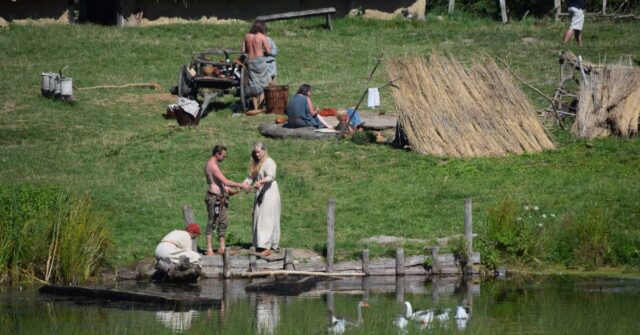
Viking Culture & Their Beliefs
The Vikings had a rich culture and tradition. They were skilled craftsmen and artists, making jewelry, weapons, and other hand-crafted ornaments. Their tales of adventure and exploration have inspired many people over the centuries.
The Vikings also believed in many gods and goddesses as part of Norse Mythology, and they had their own unique ways of worshipping them. They also believed in fate, and that everything that happened in their lives was determined by the gods.
Viking Myths & Legends
The Vikings loved stories and myths. They would often tell stories around the campfire after a long day of sailing or farming. Many of these stories were about gods and heroes, and they were passed down from generation to generation.
One of the most famous Viking myths is the story of Ragnarok. This was an apocalyptic event that would see the world destroyed by fire and ice. After this, it would be reborn anew.
Another popular Viking myth is the story of Valhalla. This was a paradise where warriors who had died in battle would go. In Valhalla, they would feast and fight all day and night, and they would never grow old or die.
Viking Society and Culture
Discover the intricacies of Viking society and culture, which encompassed a wide range of social classes, religious beliefs, artistic expressions, and daily customs. In this section, we’ll delve into the social structure, religion, art, and everyday life of the Vikings, providing a comprehensive look at the world they inhabited.
Social Structure
Viking society was characterized by a hierarchical structure, with social classes ranging from royalty and nobility to farmers, traders, and slaves.
Kings, Earls, and Chieftains
At the pinnacle of the Viking social hierarchy were the kings, earls, and chieftains. These individuals wielded immense power and were responsible for the governance of their respective territories.
Farmers, Traders, and Craftsmen
Farmers, traders, and craftsmen constituted the majority of the Viking population. Farmers cultivated the land, while traders and craftsmen facilitated trade and crafted goods, contributing to the prosperity of the Viking society.
Slaves and Thralls
At the lowest rung of the social ladder were the slaves, or thralls, who were typically captives taken during raids. They performed menial tasks and were often subjected to harsh conditions.
Religion and Beliefs
Viking religion was a complex tapestry of mythological beliefs and traditions.
Norse Mythology
Norse mythology centered around a pantheon of gods and goddesses, such as Odin, Thor, and Freyja. These deities were believed to govern various aspects of life and were revered through rituals, prayers, and sacrifices.

Conversion to Christianity
Throughout the Viking Age, the influence of Christianity gradually spread across the Norse world, leading to religious conversions and, in some cases, the merging of pagan and Christian beliefs.
Art and Craftsmanship
The Vikings were renowned for their artistic and technical prowess in various crafts.
Woodworking, Metalwork, and Textiles
Skilled Viking craftsmen created intricate wood carvings, metalwork, and textiles, reflecting the culture’s appreciation for aesthetic beauty and functional design.
Rune Stones and Carvings
Rune stones and carvings were a prominent aspect of Viking art, serving as memorials, boundary markers, or expressions of personal beliefs.
Daily Life and Traditions
Viking daily life revolved around the rhythms of work, family, and community.
Clothing and Jewelry
Viking clothing was practical and well-suited for the harsh Scandinavian climate. Jewelry, such as brooches and arm rings, was worn by both men and women, often signifying wealth and social status.
Food and Diet
The Viking diet consisted primarily of meat, fish, and dairy products, supplemented by grains, fruits, and vegetables. Mead and ale were popular beverages, consumed in both daily life and during feasts and celebrations.
Games and Entertainment
Vikings enjoyed various forms of entertainment, including games, music, storytelling, and sports. Board games like hnefatafl were popular pastimes, while skalds, or poets, recounted heroic tales and sagas to captivate their audiences.
Viking Warfare and Expansion
The Vikings were formidable warriors and skilled seafarers, their exploits shaping the course of history and leaving a lasting impact on the regions they encountered. In this section, we’ll examine the nature of Viking raids, the warriors and tactics that defined their approach to warfare, and the ships and navigation techniques that enabled their far-reaching voyages.
Viking Raids
Viking raids were a defining aspect of the Viking Age, striking fear into the hearts of people across Europe and beyond.
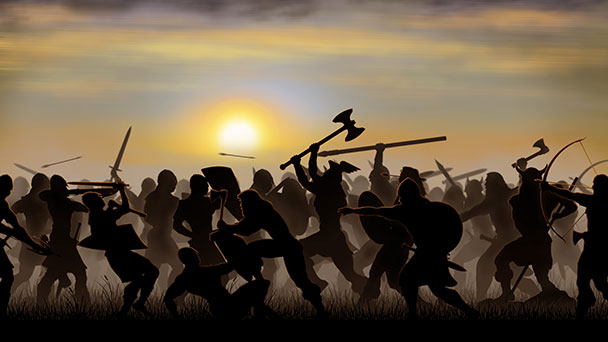
Reasons for Raiding
Raids were motivated by various factors, including the desire for wealth, land, and resources, as well as the pursuit of fame and glory in battle.
Famous Raids and Targets
Some of the most notable Viking raids targeted monasteries and settlements in the British Isles, such as the infamous attack on Lindisfarne in 793 AD. Other significant raids occurred in mainland Europe, including the Siege of Paris in 845 AD.
Viking Warriors and Tactics
Viking warriors were known for their ferocity, skill, and cunning tactics.
Berserkers and Shieldmaidens
Among the most fearsome Viking warriors were the berserkers, who were said to fight in an uncontrollable, trance-like fury. Shieldmaidens were female warriors who, according to legend, fought alongside their male counterparts in battle.
Weapons and Armor
Viking weapons and armor were designed for both offense and defense, with swords, axes, spears, and bows being the most common weapons. Round wooden shields were used for protection, while chainmail and helmets provided additional defense.
Viking Ships and Navigation
Viking ships were integral to their seafaring exploits and a testament to their advanced shipbuilding techniques.
Ship Types and Construction
Viking ships came in various designs, with the most iconic being the longship. These vessels were built with a shallow draft and a symmetrical bow and stern, allowing for unmatched speed and maneuverability.
Exploration and Sea Routes
Vikings navigated vast distances using their knowledge of the stars, currents, and landmarks. Their voyages led them to the British Isles, Iceland, Greenland, and even North America, where they established settlements like L’Anse aux Meadows.
Viking Settlements and Trade
Beyond their reputation as fearsome raiders, the Vikings were also skilled traders and settlers, establishing thriving communities throughout their territories.
In this section, we’ll explore the settlement patterns of the Viking Age, focusing on Scandinavia, the British Isles, and North America, as well as the trade networks and goods that connected the Viking world to the broader global economy.
Settlement Patterns
The Vikings founded numerous settlements throughout their territories, each serving a specific purpose.
Scandinavia
Scandinavian settlements were primarily agricultural, with inhabitants living in longhouses and engaging in farming, fishing, and animal husbandry.
British Isles
Viking settlements in the British Isles often served as strategic bases for further expansion and as centers of trade and commerce.

North America
Viking settlements in North America were primarily established for resource extraction and exploration, though their presence in the region was short-lived.
Viking Trade
Trade was a crucial component of Viking society, facilitating the exchange of goods and resources across vast distances.
Trading Goods and Resources
Vikings traded a wide variety of goods, including furs, amber, silver, slaves, and even exotic items from the East, such as silk and spices.
Trading Centers and Routes
Important trading centers, like Birka in Sweden and Hedeby in Denmark, connected the Viking world to the wider trade networks of Europe and Asia. These bustling hubs enabled the exchange of goods and ideas, contributing to the prosperity of the Viking Age.
Notable Viking Figures
Throughout the Viking Age, several legendary figures emerged, their stories immortalized in sagas and folklore. In this section, we’ll introduce you to some of the most famous Viking kings, heroes, and explorers, whose deeds continue to captivate and inspire to this day.
Legendary Kings and Heroes
Throughout Viking history, several legendary figures emerged, their deeds immortalized in sagas and folklore.
Ragnar Lothbrok
Ragnar Lothbrok was a legendary Norse hero and king, celebrated for his daring exploits and conquests. His tales of triumph and tragedy have been passed down through generations, and he remains an enduring symbol of Viking courage and resilience.
Harald Fairhair
Harald Fairhair, considered the first king of Norway, is credited with the unification of Norway under a single ruler. His reign marked a significant milestone in the formation of a unified Norwegian kingdom.
Famous Explorers
Viking explorers ventured far and wide, discovering new lands and establishing settlements across the known world.
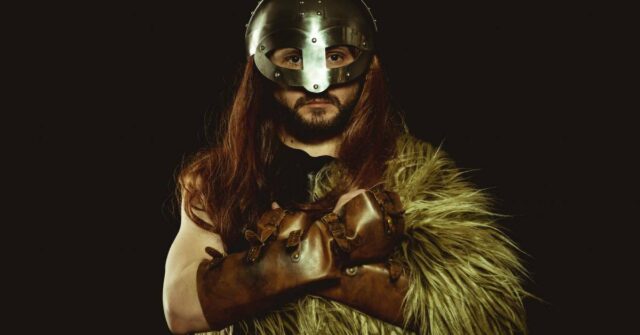
Leif Erikson
Leif Erikson, the son of Erik the Red, is believed to have been the first European to set foot on North American soil, predating Christopher Columbus by nearly 500 years. His voyage to “Vinland,” as he called it, demonstrated the Vikings’ remarkable seafaring capabilities.
Erik the Red
Erik the Red was a Norse explorer who founded the first permanent settlement in Greenland. His adventurous spirit and determination contributed to the expansion of Viking territories and the establishment of a thriving community in the harsh, Arctic landscape.
The Decline of the Viking Age and Their Legacy
All great eras must come to an end, and the Viking Age was no exception. In this section, we’ll explore the causes of the decline of the Viking Age, examining the political changes and cultural shifts that contributed to its eventual conclusion. Despite its end, the legacy of the Viking Age endures in many aspects of modern society, which we’ll also discuss here.
Causes of Decline
The decline of the Viking Age can be attributed to several factors, including political changes and cultural and religious shifts.
Political Changes
The consolidation of power under centralized monarchies in Scandinavia led to a decline in raiding and a greater focus on the administration and defense of the realm. Additionally, Viking territories were increasingly absorbed by expanding kingdoms, such as those of England and France.
Cultural and Religious Shifts
The conversion of the Vikings to Christianity played a significant role in their decline, as the new religion’s values and beliefs often conflicted with traditional Viking practices. The growing influence of Christianity led to a gradual erosion of Viking culture and identity.
Viking Influence on Modern Society
Despite the end of the Viking Age, their legacy endures in various aspects of modern society.
Language and Literature
The Vikings left a lasting impact on the languages and literature of the regions they inhabited. Old Norse, the language spoken by the Vikings, evolved into the modern Scandinavian languages and influenced the development of English.
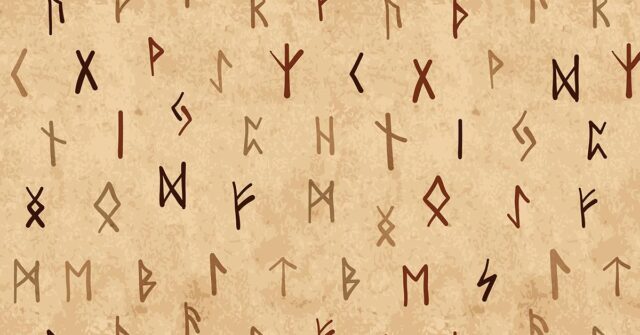
Art, Architecture, and Design
Viking art, architecture, and design continue to inspire contemporary creations, with their distinctive styles and motifs evident in modern jewelry, clothing, and decorative items.
Influence on Modern Media and Entertainment
The Viking Age has captured the imagination of countless authors, filmmakers, and game developers, leading to the creation of novels, films, television series, and video games inspired by their history and mythology. These modern adaptations introduce new generations to the rich tapestry of Viking culture and keep their legacy alive in the popular imagination.
Viking Values in Contemporary Society
While the Viking Age may have come to an end centuries ago, the values and principles that characterized their society can still be applied in our modern world.
The importance of community, perseverance in the face of adversity, and the pursuit of knowledge are timeless qualities that resonate with contemporary audiences. Embracing these values can help us navigate the challenges of our own lives and foster a sense of connection to our shared human history.
Environmental Adaptation and Sustainability
One of the most remarkable aspects of the Viking Age was their ability to adapt to diverse environments, from the frigid Arctic to the temperate lands of the British Isles.
This adaptability, combined with their sustainable approach to resource management, can serve as an inspiration for contemporary efforts to address climate change and promote environmental stewardship. By learning from the Vikings’ example, we can work towards a more sustainable future for our planet and its inhabitants.
Conclusion
The Viking Age was a remarkable period in history, marked by seafaring exploration, warfare, and cultural exchange. Over the course of three centuries, the Vikings left an indelible mark on the world, their influence evident in the landscapes, languages, and cultures they touched.
Enduring Impact on History and Culture
The Vikings’ enduring impact on history and culture serves as a testament to their resilience, adaptability, and ambition. Their legacy lives on in the stories, art, and traditions that continue to captivate and inspire people today.
Modern Rediscovery and Appreciation
In recent years, there has been a resurgence of interest in Viking history, fueled by archaeological discoveries, historical research, and popular culture. This modern fascination with the Vikings has led to a renewed appreciation for their contributions to global history and a deeper understanding of their complex society and culture.
Viking Festivals and Reenactments
Today, Viking festivals and reenactments are held in many countries, celebrating the rich heritage and traditions of the Norse people.
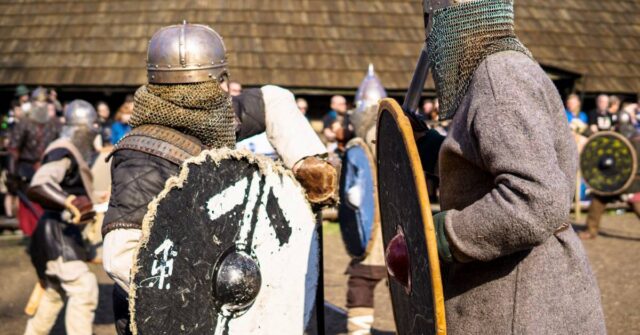
These events provide an opportunity for people to immerse themselves in the Viking way of life, from engaging in traditional crafts and games to participating in mock battles and feasts. Such celebrations not only honor the past but also foster a sense of connection to a bygone era.
Lessons from the Viking Age
As we reflect on the Viking Age and its enduring impact, we can glean valuable lessons from their story.
The Vikings’ spirit of exploration, their adaptability in the face of adversity, and their ability to forge connections across vast distances serve as powerful reminders of the potential within us all. By embracing these qualities, we too can leave a lasting legacy, shaping the course of history and the world we live in.
In conclusion, the Viking Age remains a captivating and influential chapter in human history. Their legacy continues to inspire, and their story serves as a powerful reminder of the indomitable spirit that has driven humanity to explore, create, and persevere throughout the ages.

